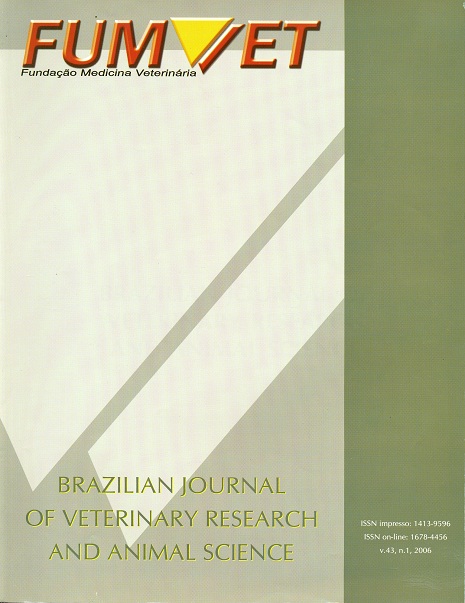Effect of insemination-to-induced ovulation interval on fertilization rate, embryo viability and number of accessory sperms in sows
DOI:
https://doi.org/10.11606/issn.1678-4456.bjvras.2006.26258Keywords:
Swine, Synchronization, Insemination, OvulationAbstract
The ideal interval between AI and ovulation (OV) is not well determined yet, varying from 12 to 28 h before up to 4 h after ovulation. Utilization of gonadotrophins to synchronize ovulation would allow the pre-determination of the groups' size, according to the AI-OV intervals, and would contribute to determine a secure interval between AI-OV. 120 sows received 7.5 mg IM of Luprostiol, between days 12 and 17 of the estrous cycle, 600 IU of eCG IM 24 h after prostaglandin and 5.0 mg of LH IM 72 h after eCG injection. The moment of ovulation was diagnosed by transrectal ultrasonography at intervals of 6 h. There were 5 treatments according to IA-OV interval: T1- 48 to 36 h before OV; T2- 36 to 24 h before OV; T3- 24 to 12 h before OV; T4- 12 to 0 h before OV and T5- 0 to 12 h after OV. Sows were slaughtered 96.7±11.37 h after OV. Recovery rate (RR), number of corpora lutea (NC), total number of structures (ST), fertilization rate (FR), embryo viability (EV) and number of accessory sperm (AS) were analyzed. The synchronization protocol showed an homogenous distribution of the animals among treatments (LH-OV interval 39.22±7.6h), and it didn't influenced the results. FR and EV results suggest that 36 h is the time of sperm viability in sow genital tract. There was a strong decline of AS between T3 and T4.Downloads
Download data is not yet available.
Downloads
Published
2006-02-01
Issue
Section
UNDEFINIED
License
The journal content is authorized under the Creative Commons BY-NC-SA license (summary of the license: https://
How to Cite
1.
Viana CHC, Candini PH, Gama RD, Carbone A, Barnabe RC. Effect of insemination-to-induced ovulation interval on fertilization rate, embryo viability and number of accessory sperms in sows. Braz. J. Vet. Res. Anim. Sci. [Internet]. 2006 Feb. 1 [cited 2025 Dec. 30];43(1):132-8. Available from: https://revistas.usp.br/bjvras/article/view/26528





